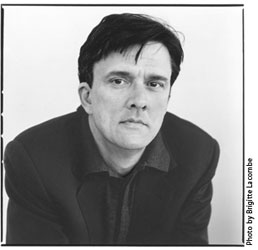Kurt Andersen: Newspapers Are F***ed
The media master holds many strong opinions about the journalism world and blogging
By Amanda Kludt

Kurt Andersen claims he has merely stumbled from job to job. But a peek at his résumé—which includes such big media names as The New Yorker, New York Magazine, Time Magazine and the “Today” show—suggests that there is more to his success than just luck.
In terms of his career, Andersen says he likes to be like ”a four-legged stool,” with multiple projects for support. He learned this lesson after he was fired in the mid-‘90s as editor of New York Magazine for giving it “too much edge.”
But it doesn’t seem like Andersen has ever been short on job offers. “Everything I do meets a certain level of funness quotient,” he says.
Andersen landed his first prestigious job writing for NBC’s ”Today” show after graduating from Harvard University. Then he wrote in the National Affairs section for Time Magazine. He published a book of essays and soon after co-founded the legendary Spy Magazine with his friend, Graydon Carter, now the editor of Vanity Fair. Spy, an irreverent publication skewering figures in media and society, achieved great popularity.
Andersen returned to Time as an editor at large, and after a year accepted an offer to be the editor of New York Magazine. After his dismissal from New York, he took a few years off to write the acclaimed novel “Turn of the Century.”
In 1999, Andersen’s friend Michael Hirschorn proposed they launch an online magazine, Inside.com, to cover the media industry. “As this Internet moment was exploding,” says Andersen, “it was like if I had the ability in 1969 to play in a band, I’d want to be part of the rock ‘n’ roll moment.”
“I am eager for the next moment in the evolution of blogs to happen, where there are people actually doing reportorial journalism in the blog form.”
While working on Inside.com, Andersen was approached by Public Radio International to host a new radio show, “Studio 360.” He is currently finishing up another novel and is contributing a regular column for New York Magazine.
Along the way, he has been a staff writer for The New Yorker, edited and relaunched Benetton’s international magazine Colors, and wrote screenplays. “For the last couple of years I’ve had a lot on my plate,” he admits.
Having worked in so many areas in the media, Andersen holds many strong opinions about the journalism world and the new craze of blogging.
“All newspapers are kind of f***ed,” he says, pointing out all of the free news sources available online. “Look at newspaper circulation numbers. They’re all on a steady decline. There’s going to be a lot of confusion and pain in the interim as this transition from paper to electronic happens.”
Andersen is a fan of blogs, but he says they need to be reinvented if they want to achieve clout in journalism. “The speed of blogs is great, but there are complex arguments and thoughts that can’t be compressed into 150 words. I am eager for the next moment in the evolution of blogs to happen, where there are people actually doing reportorial journalism in the blog form.”
He envisions a hybrid blog, whereby a journalist is paid to search out stories and blog about them, incorporating both traditional reporting and opinion. “So then it’s not just all like ‘Look at what this blogger said about this other blogger.’ It all becomes a bit of an echo chamber. The coffee gets pretty thin if you pour it through the grounds 10 times.”
Andersen maintained a blog for a short time on his own site, kurtandersen.com, but abandoned it last autumn while working on his new novel. He says he doesn’t have any spare intellectual energy to share with the world. “I did a few postings. And I’ve always known it could be a very addictive thing. It’s fun. Maybe it’s really old school of me, but I’m paid to write. So why am I going to write for free? Maybe over time I’ll develop a lot of second-rate thoughts to put on the blog.”
Is the popular snarky blog Gawker the contemporary version of his snarky Spy Magazine? “Not at all. Spy did tremendous amounts of reporting, research and traditional journalism, then presented it in funny ways. It wasn’t just like, ‘Oh, look, here’s a story in the New York Post about Anna Wintour with a monkey on her back.’ It wasn’t just pure attitude, which is what Gawker is.
“Pre-Internet, when print media was ‘it,’ the world was different in terms of being able to have impact,” he says. “Spy Magazine kind of forced to world to pay attention to it in a way that is very hard to do today, because there are so many different channels now.”
